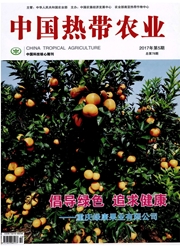

 中文摘要:
中文摘要:
胆管狭窄是肝胆外科疾病进展与治疗过程中常见并发症.近年,随着治疗技术的成熟与相关设备的研发,内镜治疗已在该领域得到广泛应用.胆管狭窄根据其病因分为良性与恶性两类.在良性胆管狭窄中,又分为手术相关和非手术相关两种.而恶性胆管狭窄主要包括胆管癌、壶腹周围癌、胰头癌等引起的癌性狭窄以及肿瘤转移或淋巴结压迫等引起的胆管狭窄.
 英文摘要:
英文摘要:
For the characteristics including minimalinvasion, low incidence of complication and better postoperative prognosis, endoscopic therapy is widely accepted to be the first line therapy for most biliary strictures. At present, repeated progressive dilation combined with multiple plastic stents placement is the main therapy for benign biliary strictures. The long-term effective rate is relatively high in surgery related strictures, but in the non-surgery related strictures, its long-term effective rate is limited and the optimal therapy should be chosen cautiously according to patients' condition. In malignent biliary stricutes, dilation combined with metallic stents placement is recommended to treat both of preoperative long-term drainage in patients with resectable tumor and palliative treatment in patients with unresectable tumor, while nosobiliary drainage is recommended in preoperative short-term drainage. The choice of unilateral or bilateral drainage depends on patients' conditons in malignent hilar biliary strictures. The merits and demerits of stents should be mastered before they are placed in stricture sections. Recently, a lot of new endoscopic technologies and methods are applied in clinical practice, but their curative effect should be tested. Therefore, accumulative evidence-based data are needed to make them more rational and more standard.
 同期刊论文项目
同期刊论文项目
 同项目期刊论文
同项目期刊论文
 Self-expandable metallic stent placement plus laparoscopy for acute malignant colorectal obstruction
Self-expandable metallic stent placement plus laparoscopy for acute malignant colorectal obstruction The results of surgery for colorectal hepatic metastases following expansion of the indications in 2
The results of surgery for colorectal hepatic metastases following expansion of the indications in 2 Predicting metachronous liver metastasis from colorectal cancer using serum proteomic fingerprinting
Predicting metachronous liver metastasis from colorectal cancer using serum proteomic fingerprinting Aberrant expression of sphingosine-1-phosphate receptor 1 correlates with metachronous liver metasta
Aberrant expression of sphingosine-1-phosphate receptor 1 correlates with metachronous liver metasta 期刊信息
期刊信息
